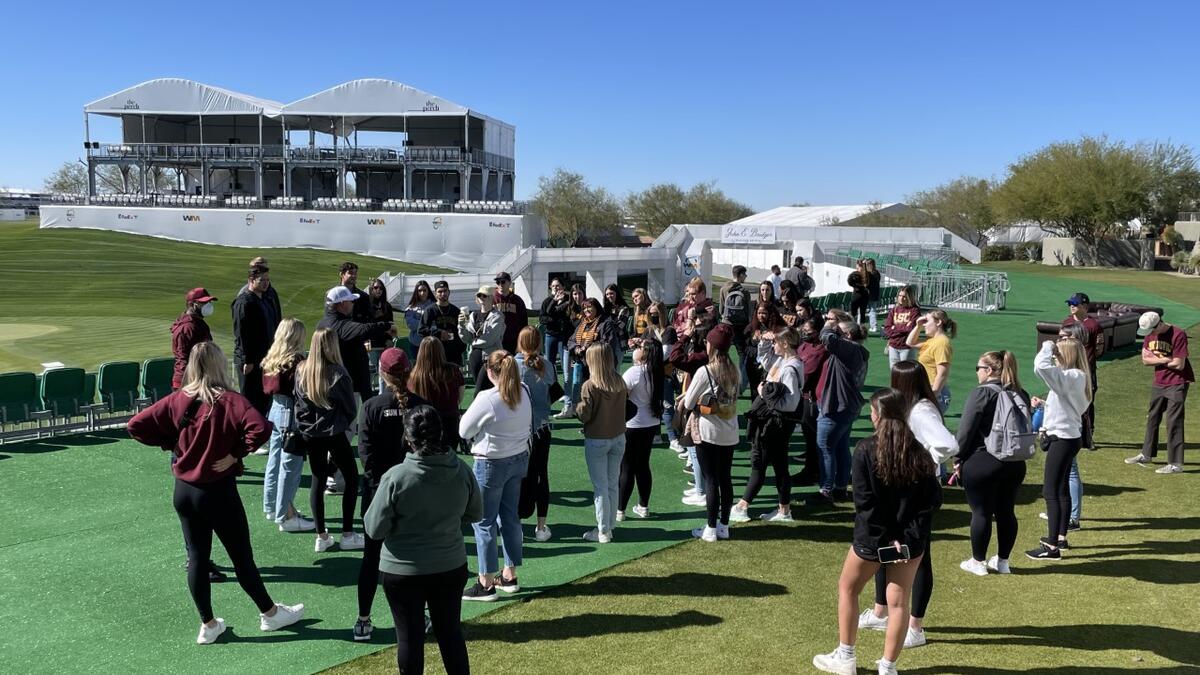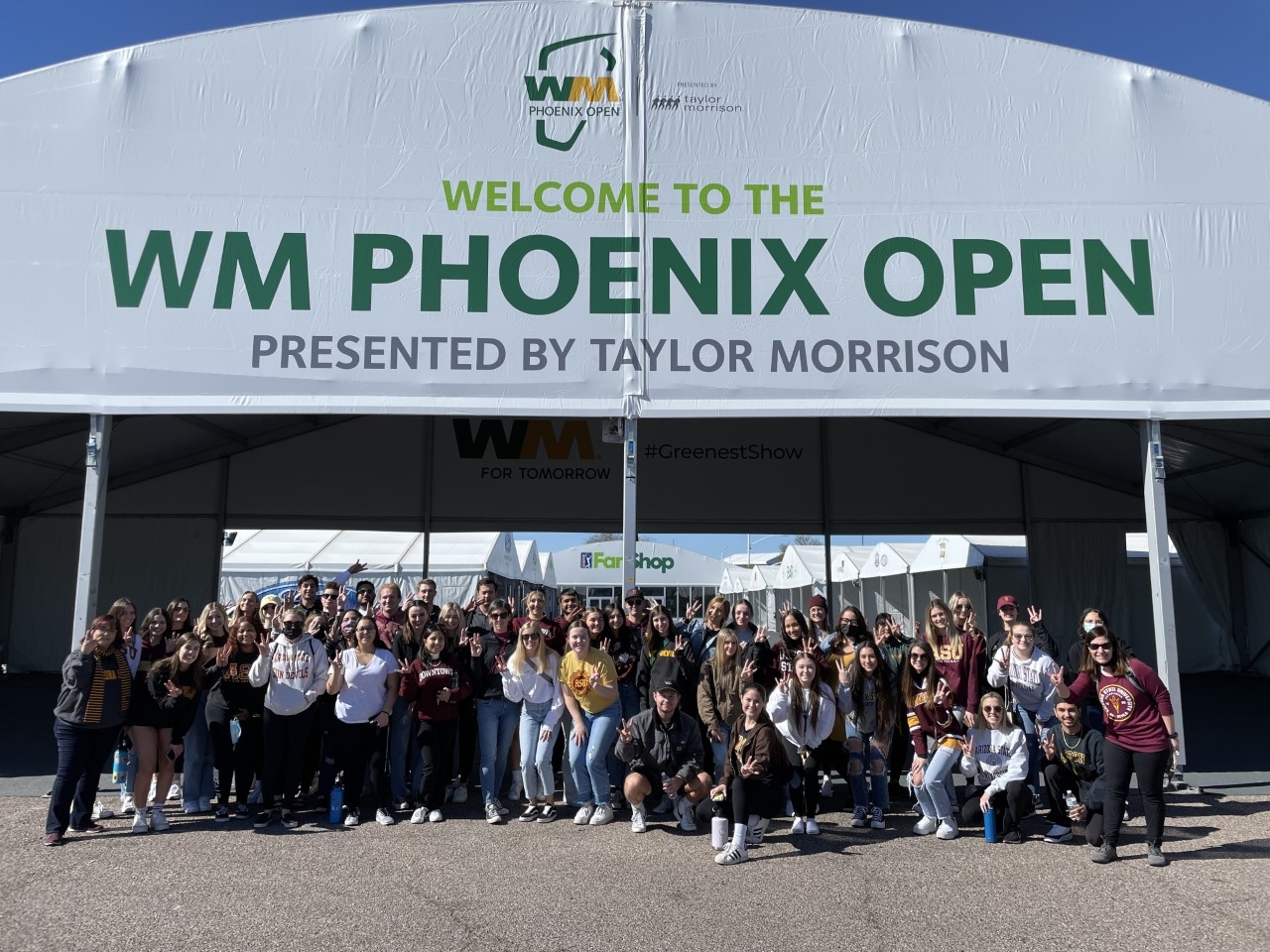ASU students go behind the scenes at Waste Management Phoenix Open

ASU events management students gather at the 18th green at the TPC Scottsdale to hear about preparations for the 2022 Waste Management Phoenix Open. Photo courtesy of Erin Schneiderman
The Waste Management Phoenix Open is the largest attended golf tournament in the world.
Students in ASU’s special event management program were treated to a behind-the-scenes tour of the TPC Scottsdale golf complex just days before it opened its gates to an expected crowd of more than 750,000.
More than 60 students attended the tour alongside Erin Schneiderman, a clinical assistant professor in the School of Community Resources and Development.
“There are so many event components that work in harmony to ensure a successful week,” Schneiderman said. “It is important for our students to fully understand the strategy, teamwork and timing needed to pull it off.”
The tour, led by officials from Pro Em National Event Services and M Culinary Concepts, focused on the operation of the tournament. This included the setup, security components and how the catering company manages to serve nearly 225,000 attendees in the tournament's hospitality suites.
First, Brady Castro, principal of Pro Em, showed students the main entrance process.
“I have been doing this a long time, and it’s nice to see our visions come to life,” he said on the tour.
After discussing how elements of the event were built, the integrity of the structures, timing and security considerations at the 1937 Club, it was time to switch gears.
At the E18hteen Hospitality Suites, students learned about menu planning, staffing, alcohol management and food waste recovery.
Doug Janison, managing partner at M Culinary Concepts, has been serving the tournament for 23 years.
“The special event industry is not a job, it’s a lifestyle,” he said. “I don’t feel like I’m ever actually working because I love what I do.”
Seven on-site kitchens are ready to produce enough food to satisfy the appetites of more than 200,000 people. The food is prepared, properly stored and transported throughout the course for guests to enjoy in the hospitality clubs and suites.
After the tour, students said they had a better understanding of what really goes into planning a massive golf tournament.
ASU events management students pose for a group photo at the TPC Scottsdale, site of the 2022 Waste Management Phoenix Open. Photo courtesy of Erin Schneiderman
“I was really surprised at the amount of time that it takes to set up and take down the event,” said Grace Doolittle, a junior studying tourism development and management.
Pro Em started building the site four months in advance, and the cleanup will take another two months.
Students also found out how they can get involved with the Phoenix Open, which event organizers call the “Greatest Show on Grass,” after the tour.
Schneiderman called the TPC Scottsdale her “classroom for the day.” Being able to learn in the field is not new for ASU special event students. They’ve previously toured Chase Field before an Arizona Diamondbacks game, and in March, they will be learning what goes on behind the scenes of the McDowell Music Festival.
Learn more about the special events management certificate and minor on the School of Community Resources and Development's website.
Story by Amber Victoria Singer, student journalist for the School of Community Resources and Development
More Arts, humanities and education

ASU graduate education programs are again ranked among best
Arizona State University’s Mary Lou Fulton College for Teaching and Learning Innovation continues to be one of the best…
ASU FIDM students to see their designs on the runway at Uncertainty Fashion Showcase
Nola Hill is perfecting every stitch of her fashion design collection, which she started conceptualizing last summer.She is among…

ASU+GSV Summit brings experts together to discuss innovation in education
This week, Arizona State University President Michael Crow and other university leadership joined education and learning experts…


